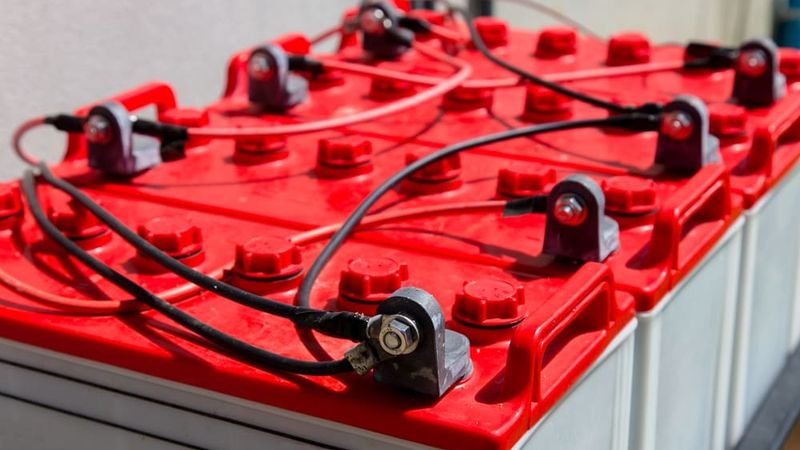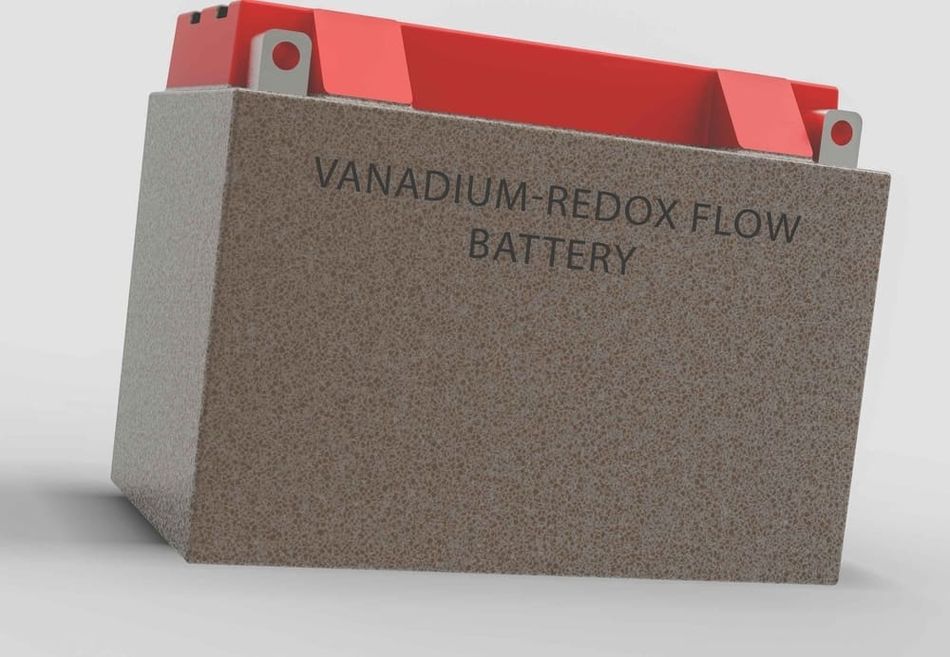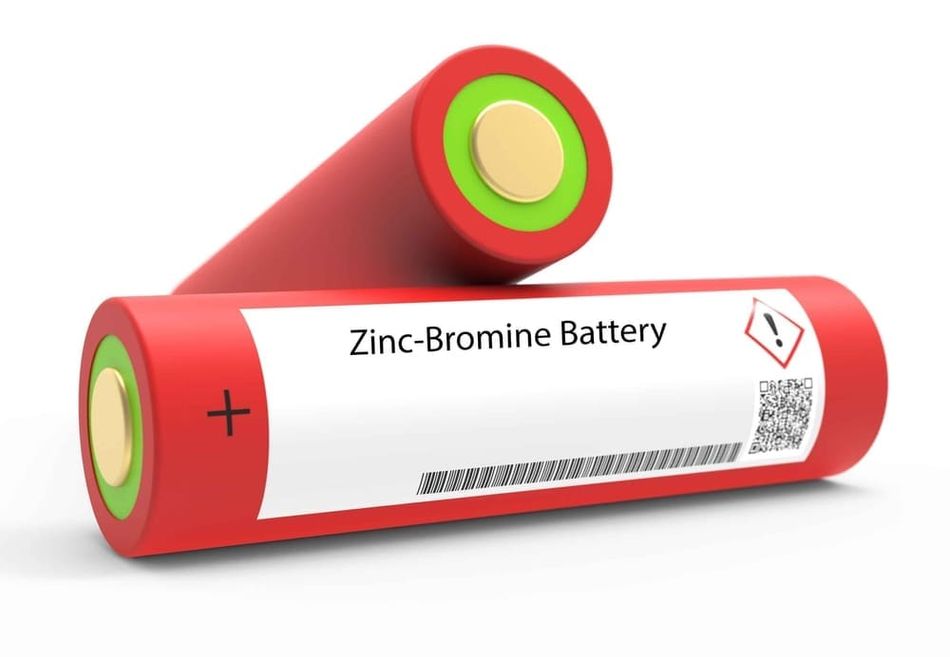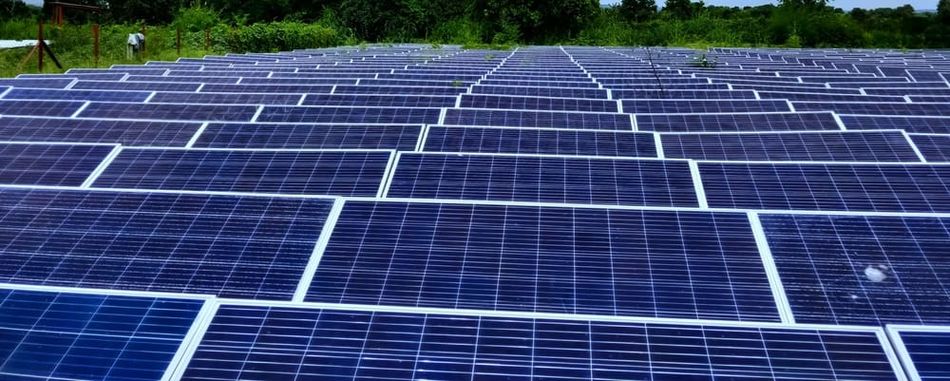What is a Flow Battery: A Comprehensive Guide to Understanding and Implementing Flow Batteries
Flow batteries have emerged as a transformative technology, offering unique advantages for storing renewable energy and balancing power grids.

Battery
Introduction
Flow batteries have emerged as promising energy storage solutions, offering efficiency and flexibility for a wide range of applications. These advanced batteries utilize chemical reactions to store and release energy, making them ideal for renewable energy integration, grid-scale storage, and load management
They serve as the cornerstone of renewable energy technologies due to their unique operational principles. This article aims to provide you with a detailed and comprehensive understanding of flow batteries, their underlying science, benefits, limitations, and their role in renewable energy systems. We will journey together into the heart of flow batteries, discussing their components, operation, types, and their significant role in the ever-growing domain of energy storage. This exploration is designed to inform and engage both novices and experts in the field, painting a comprehensive picture of this vital energy technology.
Understanding the Basics of Batteries
In simple terms, a battery is a device that stores electrical energy in the form of chemical energy, and converts that energy into electricity..The essential elements responsible for this conversion are the anode, cathode, and electrolyte.
The anode, also known as the negative electrode, plays a crucial role in the battery's operation. It is where the oxidation reaction occurs, generating electrons that flow out of the battery to power the connected device. In lithium-ion batteries, graphite is commonly used as the anode material. Graphite particles have the ability to store lithium ions, typically one lithium ion for every six carbon atoms.
On the other hand, the cathode, or the positive electrode, is responsible for the reduction reaction. During this process, the cathode accepts electrons that have completed their work in powering the device, allowing them to return to the battery. In lithium-ion batteries, lithium cobalt oxide is often used as the cathode material. Its structure is well-suited for accepting lithium ions from the anode during discharge and releasing them back during charging.
The electrolyte is a critical component that facilitates the charge and discharge process in a battery. It acts as a medium through which ions move from the anode to the cathode during discharge and vice versa during charging. The electrolyte can exist in different forms such as liquid, gel, or solid-state. In the case of lithium-ion batteries, the electrolyte typically consists of a lithium salt dissolved in an organic solvent. The choice of electrolyte material is essential as it needs to provide efficient ionic conductivity while remaining chemically stable within the battery's operating voltage and temperature range.
This basic operating principle remains at the core of battery technology, from the smallest button cells in watches to large-scale batteries for electric vehicles and power grid storage. Each of these components - the anode, cathode, and electrolyte - interact in harmony to store and release energy. Understanding these components and their interaction is essential to comprehending the uniqueness and utility of different battery technologies, such as flow batteries.
A Deep Dive into Flow Batteries
Flow batteries stand out from conventional batteries with their distinct operation and structure. They are rechargeable batteries that separate the energy storage medium and energy conversion. Electrolytes are stored externally in tanks, while the electrochemical cell handles energy conversion.
Flow batteries have two main categories:
Redox flow batteries
Redox flow batteries utilize redox reactions of the electrolyte solutions for energy storage. The concentration of active species directly affects their energy density. An example is the Vanadium Redox Flow Battery (VRFB), where vanadium ions change oxidation state to generate electrical current.
Hybrid flow batteries
Hybrid flow batteries incorporate one solid electrode along with a flowing electrolyte. This solid electrode, often made from a metal, stores energy through plating and de-plating processes, similar to how traditional batteries function. A popular example is the Zinc-Bromine flow battery. In this type, the zinc is electroplated onto the anode from the zinc bromide electrolyte during charging, and the process is reversed during discharging.
For both types of flow batteries, an ion-permeable membrane separates the positive and negative electrolytes in the electrochemical cell. This membrane allows for the transport of ions between the electrolytes, which is essential for maintaining electrical neutrality during the charge and discharge cycles. However, the membrane is also designed to prevent the electrolytes from mixing, as such mixing would lead to a decrease in the battery's performance.
Lastly, electrodes in a flow battery serve a somewhat different role than in conventional batteries. Instead of being an active participant in the redox reactions, electrodes in flow batteries mainly act as a catalyst, aiding in the reactions of the electrolyte species.
In summary, flow batteries provide a distinct approach to energy storage. The separation of energy storage and conversion, the use of fluid electrolytes, and the unique role of electrodes, all contribute to the particular characteristics and advantages of flow batteries.
The Science Behind Flow Batteries
Flow batteries operate through redox reactions, where electrons are gained and lost in the electrolyte solutions. This interplay of ions and electrons drives the battery's function, facilitating the flow of energy within the system.
The principle of operation in flow batteries involves the circulation of electrolyte solutions from external reservoirs into a cell containing a membrane and electrodes. This circulation is typically achieved through pumps, creating a flow, hence the name 'flow batteries'.
In a flow battery, the anode side of the battery holds an electrolyte with a metal ion in a lower oxidation state. As the battery discharges, an oxidation reaction occurs at the anode, causing the metal ions to lose electrons, which then flow through an external circuit to power a device. Simultaneously, on the cathode side, the metal ions in a higher oxidation state undergo a reduction reaction, gaining the electrons that have passed through the external circuit.

For example, in the Vanadium Redox Flow Battery, a common type of flow battery, four different oxidation states of vanadium ions (V2+, V3+, VO2+, and VO2+) are utilized in the redox reactions. During discharge, V2+ ions in the anode electrolyte are oxidized to V3+, while VO2+ ions in the cathode electrolyte are reduced to VO2+. This ion exchange is facilitated by the proton exchange membrane that allows for the passage of protons, maintaining the electrical neutrality of the system.
During charging, the reactions reverse. The V3+ ions at the anode are reduced back to V2+ ions, while the VO2+ ions at the cathode are oxidized back to VO2+ ions. In both charging and discharging states, the electrons are moved through the external circuit, either providing power to a device (during discharging) or being supplied power from an external source (during charging).
A unique advantage of using vanadium in both electrolytes is the elimination of cross-contamination, as only one type of ion is transferred across the membrane. This not only improves the longevity of the battery but also eliminates the need for frequent membrane replacement, reducing maintenance costs.

In the case of Zinc-Bromine Flow Batteries, the anode side contains a zinc bromide electrolyte solution. During charging, zinc metal is plated onto the anode from the solution, while bromine is produced at the cathode. The bromine is then complexed with an amine compound to form a dense, non-volatile bromine complex, which settles at the bottom of the cell. In the discharging state, the reactions reverse.
Understanding this intricate dance of ions and electrons is essential to comprehend the function, advantages, and potential limitations of flow battery technology. The science behind flow batteries provides a foundation upon which to explore their applications, benefits, and future advancements in the field.
Advantages of Flow Batteries
Flow batteries offer several advantages that make them a compelling choice for various energy storage applications. These advantages stem from the unique features of flow battery technology, which include flexibility in design, scalability, longevity, safety, and sustainability.
Flexible Design: Flow batteries offer the unique advantage of decoupling power and energy, allowing for independent design optimization. The power output can be adjusted by varying the size of the cell stack, while the energy storage capacity is determined by the volume and concentration of the electrolyte solutions. This flexibility enables customization to meet specific application requirements, making flow batteries versatile and adaptable.
Scalability: Flow batteries excel in scalability, particularly in grid-scale energy storage applications. By increasing the size of the energy reservoirs, the total energy storage capacity can be easily expanded. This scalability is crucial for meeting the growing demand for large-scale energy storage solutions, supporting the integration of renewable energy sources, and ensuring a stable and reliable power supply.
Longevity: Flow batteries exhibit exceptional longevity and durability. Unlike conventional batteries with solid electrodes, flow batteries utilize liquid electrolytes, minimizing electrode degradation over time. This characteristic allows flow batteries to withstand a high number of charge and discharge cycles without significant capacity loss. Moreover, certain flow battery chemistries, such as those employing vanadium ions, benefit from the use of identical elements in both electrolytes, reducing cross-contamination and extending the battery's lifespan.
Safety: Flow batteries prioritize safety in their design. The use of aqueous electrolyte solutions, which are typically non-flammable, significantly reduces the risk of fire and explosion compared to other battery technologies. Additionally, the separation of energy storage and power production within the system provides inherent safety advantages. In the event of a malfunction, the likelihood of a catastrophic failure is reduced, minimizing potential hazards and ensuring a safe operating environment.
Sustainability: Flow batteries contribute to sustainability efforts in the energy sector. Many flow battery chemistries utilize abundant and non-toxic materials, such as vanadium or organic molecules, in their electrolyte solutions. This environmentally friendly approach reduces the reliance on scarce resources and minimizes the environmental impact associated with battery production and disposal. The use of sustainable materials aligns with the goals of achieving a cleaner and more sustainable energy future.
These advantages make flow batteries a promising solution for a wide range of energy storage applications, particularly in grid-scale deployments where conventional battery technologies may face limitations. The flexibility, scalability, longevity, safety, and sustainability of flow batteries position them as a key player in advancing the transition to a more reliable, efficient, and sustainable energy infrastructure.
Limitations and Challenges of Flow Batteries
Despite the numerous advantages of flow batteries, they are not without their limitations and challenges. Some of the key concerns include low energy density, high upfront costs, technical challenges, and potential environmental issues.
Low energy density: Flow batteries have lower energy density compared to other battery technologies due to the nature of their aqueous electrolyte solutions. These solutions inherently have lower energy content compared to the dense active materials used in conventional batteries. This limitation can be a drawback in applications where compact size and weight are crucial factors, such as portable electronics or electric vehicles.
High upfront costs: The high upfront costs of flow batteries can be attributed to several factors. The cost of electro-active species, such as vanadium, can be significant. Additionally, the power conversion systems required in flow battery setups can be complex and expensive. The membrane, an essential component that separates the electrolyte solutions, also adds to the overall cost. However, it's worth noting that the long lifespan and high cycle life of flow batteries can help offset these upfront costs over the lifetime of the battery system.
Technical challenges: Flow batteries present certain technical challenges that need to be addressed for widespread adoption. The requirement for large amounts of electrolyte solutions and the need for extensive plumbing systems can add complexity to the design and installation of flow battery systems. Ensuring the balance of electrolyte solutions over time is crucial for optimal performance, as imbalances can lead to reduced efficiency and capacity. Ongoing research and development efforts focus on improving system designs, enhancing the stability of electrolyte solutions, and optimizing flow battery operation and control.
Potential environmental issues: While flow batteries are generally considered more environmentally friendly than some other battery technologies, certain aspects require attention. Some flow battery designs utilize acidic electrolytes, which can pose challenges for safe handling and disposal. Additionally, although flow batteries using vanadium have excellent performance characteristics, vanadium is not as abundant as other elements, and its extraction and processing can have environmental impacts. Exploring alternative materials and improving recycling and disposal processes are essential for minimizing the environmental footprint of flow batteries.
Addressing these limitations and challenges through ongoing research and innovation is vital for further advancing flow battery technology. By improving energy density, reducing upfront costs, addressing technical complexities, and enhancing environmental sustainability, flow batteries can become even more competitive and valuable for a wide range of energy storage applications.
Flow Batteries in Renewable Energy
Flow batteries are uniquely positioned to address some of the most significant challenges in renewable energy, particularly in the realm of energy storage. Renewable energy sources such as solar and wind are inherently intermittent – the sun doesn't always shine, and the wind doesn't always blow. Hence, the electricity generated from these sources needs to be stored for use during periods of low generation.
One of the key features that makes flow batteries attractive for renewable energy storage is their ability to decouple power and energy capacity. This feature allows the battery's energy storage capacity to be increased simply by adding more electrolyte, without the need to increase the power rating. This trait makes them ideal for long-duration energy storage, as they can store energy for several hours or even days.
Flow batteries can also offer high cycle life with minimal degradation. The chemical reactions that take place in flow batteries are reversible, which means they can be charged and discharged many thousands of times without significant loss of capacity. This high cycle life makes them well suited to the frequent charge/discharge cycles often encountered in renewable energy applications.
Flow batteries also offer excellent response times, capable of ramping up from zero to full power output almost instantly. This rapid response time is particularly useful in renewable energy applications, where sudden changes in power output (for instance, due to a cloud passing over a solar farm) can require rapid adjustments in energy storage system output.
Integration with smart grid and microgrid systems is another potential application for flow batteries in the renewable energy sector. These systems, which use advanced control technologies to coordinate the generation, distribution, and use of electricity, can benefit from the flexible energy storage capabilities of flow batteries. The ability of flow batteries to provide both short-term power balancing and long-term energy shifting makes them a versatile tool for these complex energy management systems.
Despite these advantages, integration of flow batteries into renewable energy systems is not without challenges. The high upfront costs and technical complexity of flow batteries can be barriers to adoption. However, ongoing research and development efforts are aimed at reducing these costs and improving the technology's performance and reliability, potentially making flow batteries a key component of the renewable energy landscape in the future.
One promising avenue for flow batteries in renewable energy lies in their potential to be coupled with solar energy systems. Solar power (GOOD) (GOOD) (GOOD), a rapidly growing source of clean energy, can benefit from the energy storage capabilities of flow batteries.

By integrating flow batteries with solar panels, excess energy generated during the day can be stored and utilized during periods of low or no sunlight, ensuring a consistent power supply. This combination offers a sustainable and low-cost solution, reducing reliance on fossil fuel-based power sources and minimizing greenhouse gas emissions associated with traditional power generation from turbines. The synergy between solar energy and flow batteries holds promise for achieving a more reliable and environmentally friendly renewable energy system.
Recommended Reading : Community-scale batteries that allow more solar energy to be stored suburbs (GOOD) (GOOD) (GOOD)
Conclusion
Flow batteries represent a transformative technology in the realm of renewable energy storage solutions. The chemistry and characteristics of flow batteries render them particularly suited to certain energy storage applications, such as grid-scale storage and load-balancing in renewable energy systems. Although certain challenges related to materials, cost, and efficiency persist, ongoing research and development continue to address these, driving the technology closer to mainstream adoption.
As the demand for renewable energy continues to grow, the role of energy storage in enabling a reliable and resilient power grid becomes increasingly critical. Flow batteries offer a promising solution to address the intermittency of renewable energy sources and provide long-duration energy storage capabilities. With advancements in technology, improvements in efficiency, and cost reductions, flow batteries have the potential to revolutionize the energy storage landscape, supporting the widespread integration of renewable energy and paving the way for a sustainable and greener future. Continued innovation and collaboration among researchers, industry stakeholders, and policymakers will be key in unlocking the full potential of flow batteries and accelerating the transition to a cleaner and more sustainable energy system.
FAQs
1. What are the key components of a flow battery?
A flow battery consists of two tanks of liquids (electrolytes), a cell stack (where the electrochemical reaction occurs), and a power conversion system. The electrolytes are circulated from their respective tanks into the cell stack, generating electricity.
2. How do flow batteries compare to traditional batteries like lithium-ion?
Flow batteries have several advantages over traditional batteries like lithium-ion. They have longer lifetimes, have the ability to store large amounts of energy, and don't degrade over time. However, they are larger and heavier than traditional batteries, making them less suitable for portable applications.
3. Why are flow batteries considered good for renewable energy systems?
Flow batteries have the ability to store large amounts of energy, making them ideal for storing energy generated by renewable sources like solar and wind. They can store energy when generation is high and release it when demand is high.
4. What are the challenges facing flow batteries?
While flow batteries have many advantages, they also face some challenges. These include the high cost of materials, the need for advanced materials that can withstand corrosive electrolytes, and the efficiency of the electrochemical reactions.
5. What is the future of flow batteries?
The future of flow batteries looks promising. Research and development are ongoing to improve the technology, make it more cost-effective, and increase its efficiency. With the increasing demand for renewable energy storage solutions, flow batteries are expected to play a significant role.
6.Can flow batteries be used for residential energy storage?
Flow batteries can be used for residential energy storage, but their larger size and higher upfront costs may make them less practical for individual households compared to other battery technologies like lithium-ion. However, they can be suitable for larger residential or community-scale energy storage projects.
7. How long do flow batteries last?
Flow batteries are known for their long cycle life, typically lasting for thousands of charge and discharge cycles without significant capacity loss. The exact lifespan depends on various factors, including the specific flow battery chemistry, operating conditions, and maintenance practices.
Referrences
[1] Energy Storage Association (ESA)- https://energystorage.org/ (EXTERNAL) (EXTERNAL) (EXTERNAL)
[2] U.S. Department of Energy (DOE) - https://www.energy.gov/ (EXTERNAL) (EXTERNAL) (EXTERNAL)
[3] Clean Energy Council (CEC) - https://www.cleanenergycouncil.org.au/ (EXTERNAL) (EXTERNAL) (EXTERNAL)
